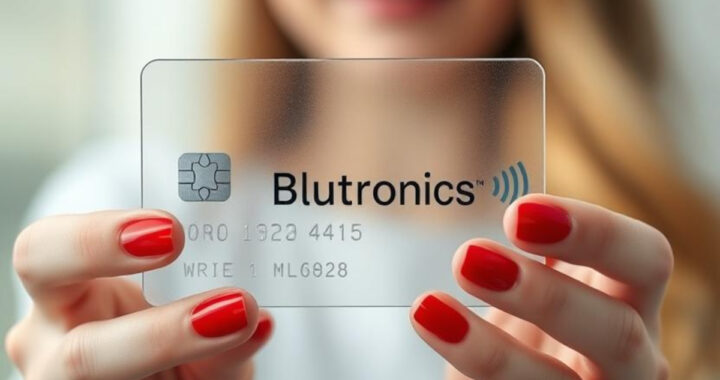Smart Cards Explained: A Simple Guide to How They Work and Why They Matter
Author: Dario Leone
Reading time: 3 min

Smart cards are everywhere in our daily lives, but many people don’t realize what they are or how they work.
From paying for your coffee to unlocking your office door, smart cards play a big role in keeping things secure and convenient.
In this article, we’ll break down everything you need to know about smart cards in simple terms, including what they are, how they work, and why they’re so important.
Table of Contents
- What is a Smart Card?
- How Do Smart Cards Operate?
- Types of Smart Cards
- Typical Applications of Smart Cards
- What is a Cryptographic Smart Card?
- Why Cryptographic Smart Cards Work with PKCS#11 Library Drivers
- Typical Cryptographic Smart Card Applications
- Conclusion
1. What is a Smart Card?
A smart card is a small plastic card, about the size of a credit card, that has a tiny computer chip inside it.
This chip can store information, process data, and even perform calculations.
Unlike a regular magnetic stripe card (like an old credit card), a smart card can do more than just store data—it can interact with other devices, like card readers, to perform tasks securely.
Think of it like a mini-computer in your pocket!
2. How Do Smart Cards Operate?
Smart cards work by communicating with a card reader.
Then when you insert the card into a reader or put the contactless card on the reading area, the reader communicate with the computer and asks it to perform a task, like
- verifying your identity
- making a payment
- encrypt data to keep it secure
- opening a door
or other actions depending on software application.
3. Types of Smart Cards
Smart cards come in different types, each designed for specific uses. Here are the main types:
Types of Smart Cards:
- Memory Cards: These can only store data, like a USB drive. They’re used for simple tasks, such as storing money on a prepaid card.
- Microprocessor Cards: These have a small computer inside that can process data. They’re used for more complex tasks, like banking or identification.
- Contact Cards: These need to be inserted into a reader to work (e.g., SIM cards in phones).
- Contactless Cards: These use radio waves to communicate with a reader (e.g., transit cards for buses or trains).
- Dual-Interface Cards: These can work both ways—by inserting or tapping.
ISO Standards:
To make sure smart cards work the same way everywhere, there are international standards. Some of the most important ones are:
- ISO/IEC 7816: For contact smart cards (like credit cards).
- ISO/IEC 14443: For contactless smart cards (like transit cards).
- ISO/IEC 15693: For cards that work from a longer distance (like library cards).
- ISO/IEC 18092: For cards that work with a short distance (max 10cm)
4. Typical Applications of Smart Cards
Smart cards are used in many areas of life. Here are some common examples:
- Banking: Credit and debit cards with chips.
- Transportation: Cards for buses, trains, and subways.
- Mobile Phones: SIM cards that store your phone number and data.
- Healthcare: Cards that store your medical information.
- Access Control: Cards that let you into secure buildings or rooms.
- Loyalty Programs: Cards that store points for rewards at stores.
5. What is a Cryptographic Smart Card?
A cryptographic smart card is a special type of smart card that’s designed to keep information super secure.
It has a powerful chip that can perform advanced math operations to encrypt data, create digital signatures, and manage secret codes (called cryptographic keys).
Think of it like a vault for your digital information. It’s used in situations where security is critical, like online banking or government IDs.
6. Why Cryptographic Smart Cards Work with PKCS#11 Library Drivers
PKCS#11 is a set of rules that helps software talk to cryptographic smart cards. Here’s why it’s important:
- Standardization: It provides a common language for different devices and programs to work together.
- Security: It ensures that sensitive data, like encryption keys, stays on the card and doesn’t get exposed to the computer.
- Flexibility: It allows developers to use smart cards in many types of applications, like secure email or online banking.
In simple terms, PKCS#11 is like a translator that helps your computer understand and work with the smart card securely.
7. Typical Cryptographic Smart Card Applications
Cryptographic smart cards are used in high-security situations. Here are some examples:
- Digital Signatures: Signing documents online to prove they’re authentic.
- Secure Logins: Using the card to log into computers or websites securely.
- Encryption: Protecting sensitive data, like emails or files, so only authorized people can read them.
- E-Government: Issuing secure IDs, passports, or voting cards.
- Online Banking: Keeping your transactions safe from hackers.
Conclusion
Smart cards are a fascinating blend of technology and convenience.
They make our lives easier and safer, whether we’re paying for groceries, riding the bus, or logging into a secure system.
Cryptographic smart cards take this a step further by adding advanced security features to protect our most sensitive information.
By understanding how smart cards work and where they’re used, we can appreciate the invisible technology that keeps our world running smoothly.
Next time you tap your card to pay or unlock a door, you’ll know there’s a tiny computer working hard behind the scenes!